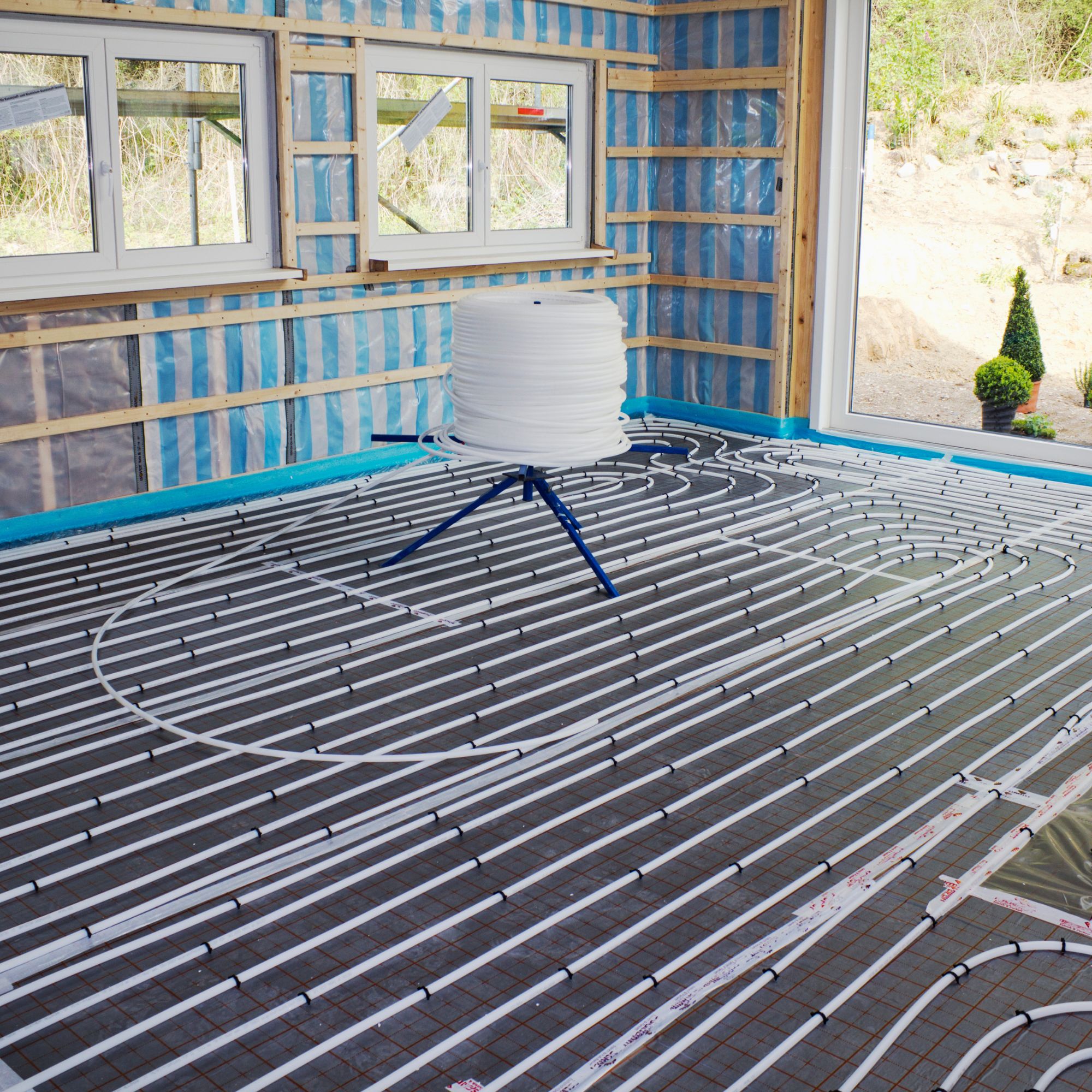Wet vs electric underfloor heating — are you making a huge mistake fitting one over the other? This is what the heating pros say
I asked the pros how you choose the right option for your home


Whether you are renovating your existing home, or adding more space with an extension, you'll need to figure out how you plan to heat it. Underfloor heating is a popular option, but with different types available, how do you know which is best?
If you've decided that underfloor heating is the right choice for your home, one of the first decisions you'll need to make is whether you want a wet or electric system. But if you're new to the world of this kind of heat emitter, you might feel a little flummoxed as to which type of underfloor heating is best for your home, and you definitely don't want to make the wrong choice.
Fortunately, I've spoken to numerous underfloor heating pros and got their expert insight on which type of underfloor would best suit your home and why.
What's the difference between wet and electric underfloor heating?

Wet underfloor heating is better for an open plan kitchen diner than an electric system, as the price of electricity would mean high running costs in a room of this size
Before you can decide which is better, you need to understand the difference between wet and electric underfloor heating. Both types are similar in that they effectively turn your floor into a radiator, and there are several pros and cons of each type of underfloor heating that you should be aware of before you set your heart on it.
But while the end result is similar, the differences stem from how the systems actually work. 'Wet underfloor heating (UFH) works by running warm water through pipes hidden beneath the floor to heat a room,' explains Ben Perris, Head of Sales for Indoor Climate Solutions at Wavin. 'Instead of using radiators, the heat rises evenly across the whole room, eliminating cold spots and creating a more stable and consistent indoor climate.'
On the other hand electric underfloor heating, also known as dry underfloor heating, doesn't use water at all. Instead it is connected to your home's mains and the cables are heated with electricity.
Which is better — wet or electric underfloor heating?

Wet underfloor heating is more easily installed in new build spaces, but it is possible to retrofit it in an existing home
Determining whether wet or electric underfloor heating is better will primarily depend on where you want to install it. For large spaces or whole homes, wet is definitely best, while electric underfloor heating is better suited to small rooms, like bathrooms.
Sign up to our newsletter for style inspiration, real homes, project and garden advice and shopping know-how
'Wet underfloor heating is best used when a home is first being constructed, in extensions or as part of a major renovation,' says heating expert Matthew Jenkins from MyJobQuote.co.uk. 'This is because the installation is more complex and involved although it is sometimes possible to install over existing floors. It is often used as the primary heating source in newer homes.'
When it comes to dry systems, Matthew adds: 'Electric underfloor heating is ideal for retro fitting and in situations where a wet system would not be practical or possible. It’s typically used as a secondary heating source and is also ideal in small rooms as the running costs for electrical heating is higher than a wet system. It works well in awkward spaces as the wires can be laid out to fit all shapes of room.'
Electric underfloor heating has a faster heat up time than wet underfloor heating (but also cools quicker), which adds to it's suitability for rooms that aren't in constant use, such as bathrooms and en suites.
It's also important that you choose the right floorcovering for your underfloor heating to ensure it works most effectively and to ensure you reap all the benefits.
Which type of underfloor heating is cheaper — wet or electric?
The cost of underfloor heating is another important factor to consider, and there are marked differences between wet and electric underfloor heating.
Electric systems are cheaper to install than wet, as the process is simpler and they are primarily installed in small, individual rooms rather than large open plan spaces. However the opposite is true when it comes to long-term running costs, where the price per unit of electricity compared to a unit of gas comes into play.
'Electric systems are primarily advised for only heating smaller spaces such as a bathrooms or single-room retrofit projects due to the ever-increasing running costs,' says Sam Jump, Head of Business Development, Wunda Group PLC. 'Water-based systems are cheaper to run than electric and have a much longer working life span, so are best for larger-scale projects such as kitchens, open-plan spaces and full-house renovations.'
Which type of underfloor heating is more efficient?
When it comes to the efficiency of underfloor heating, if you want underfloor heating in a single room that is only used for short bursts at a time, then electric underfloor heating will be the most efficient thanks to it's quick heat up time.
But if you want to heat larger spaces or your whole home, then wet underfloor heating is the better choice. It may cost more to install, and take longer to warm up, but the even spread of heat ensures you can achieve a consistent level of comfort throughout.
But in order for your underfloor heating to work most efficiently, it needs to be installed correctly, so make sure you choose a reputable installer.
FAQs
Is underfloor heating better than radiators?
In terms of energy efficiency, underfloor heating pips radiators to the post, as it works at lower temperatures than traditional radiator systems. 'Water-based underfloor heating gives a superior output to radiators while using much lower temperatures which means running costs, and in turn heating bills, are greatly reduced,' says Sam Jump. 'In the long run, underfloor heating is cheaper than radiators as your whole floor becomes your heat emitter and as the underfloor heating replaces your radiators you can free up space in your home for more design freedom on layout and furniture.'
But while underfloor heating may work more efficiently, it's more expensive to install than a radiator, so make sure you weigh up underfloor heating versus radiators carefully before you decide.
Whichever type you choose, before you install it make sure you read what experts say you should know before installing underfloor heating.

Sarah Handley is Ideal Home’s Renovation Editor. She joined the team full time in September 2024, following three years of looking after the site's home finance content. As well as all things renovation, Sarah also looks after our Home Energy content, which covers all aspects of heating and insulation as well as tips on how homeowners can reduce their energy usage. She has been a journalist since 2007 and has worked for a range of titles including Homebuilding & Renovating, Real Homes, GoodtoKnow, The Money Edit and more.
You must confirm your public display name before commenting
Please logout and then login again, you will then be prompted to enter your display name.